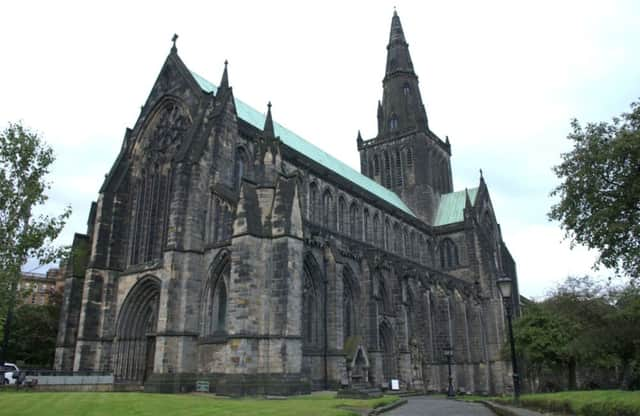Glasgow Cathedral visitors to be charged for entry


But now, visitors to one of the most revered cathedrals in Europe will be asked to pay an admission fee in a contentious move that has been criticised by its minister and civic leaders.
Glasgow Cathedral, a historic landmark in Scotland’s largest city, is the only medieval cathedral on the Scottish mainland to have survived the Protestant Reformation of 1560 virtually intact.
Advertisement
Hide AdDating to the 12th century, it has been a place of worship for generations of Glaswegians and visitors from beyond the city boundaries, with a well-established congregation.
As of next spring, however, tourists wishing to tour the cathedral will face a fee, with the stewards of the grand old building mindful of the ongoing maintenance costs.
The appeal of the Castle Street cathedral, also known as the High Kirk of Glasgow, goes well beyond the members and adherents of the Church of Scotland. Regarded as the finest building surviving in Scotland from the 12th century, it is viewed by many as the high point of cathedral building in Europe and is placed in the top 25 visitor attractions in Glasgow, according to the website TripAdvisor.
As such, Historic Scotland said that like many other cathedrals, the building performs a “dual function,” acting as both place of worship and visitor attraction.
“Any admission charge introduced would apply to visitors only and would not affect worshippers, with any income generated from the introduction charge reinvested into the cathedral and the wider historic environment,” said a spokesman for the Scottish Government agency.
Although discussions with the Church of Scotland and other parties are ongoing, it is understood Historic Scotland is proposing an admission fee of up to £5 as of April next year.
Advertisement
Hide AdAlready, more than 600 people have signed an online petition urging the agency to reconsider, while the minister of the cathedral, the Rev Dr Laurence Whitley, has also warned that any entry charge would diminish the building’s standing.
The vast majority of the city’s leading tourist attractions, including Kelvingrove Art Gallery, offer free admission.
Advertisement
Hide Ad“This would be the only attraction, almost in the city, where you would have to pay,” said Dr Whitley.
“I don’t know if that’s a terribly good message to be sending out, if people come to the mother church of this great city and find that they have to pay to get in just to see it.”
The Kirk Session of the cathedral said yesterday it was “fiercely opposing” the move, which was “totally unreasonable” and would “exploit” the cathedral.
Glasgow council leader Gordon Matheson said he had been contacted by individuals who expressed “significant concerns” over the entry fee plan.
In a letter to Historic Scotland, Mr Matheson pointed out that the cathedral has been “a place of worship and welcoming place” for city-dwellers and tourists for hundreds of years.
He added: “The cathedral is also used by both visitors to and patients of the neighbouring Glasgow Royal Infirmary.
Advertisement
Hide Ad“I share the concerns about the prospect of Glaswegians, including patients and their families, being asked to pay.”
Sights where money seems to be the religion
IF THE proposed admission fee at Glasgow Cathedral goes through it will not be the only celebrated religious building managed by Historic Scotland asking visitors to reach into their pockets.
Advertisement
Hide AdTourists to Iona Abbey, one of the nation’s most historic and sacred destinations, must pay as much as £7.10 to see the site founded by St Columba. With children’s tickets priced at £4.30, a family of four would be asked to spend £22.50 for their admission.
The agency also charges for entry to the ruins of St Andrews Cathedral, once Scotland’s largest and most magnificent church. The fees are £2.70 for a child and £4.50 for an adult.
Some of the steepest fees, however, are charged at Rosslyn Chapel, with adult tickets as much as £9. Income from admissions not only helps to cover the running costs, it supports the trust who own the chapel in their long-term conservation plans.
Further afield, York Minster introduced admission fees in 2003, after debts soared to £600,000. Originally, £3.50 was charged, but adult prices now stand at £10.
Adult prices for entry to St Paul’s Cathedral in London, Sir Christopher Wren’s masterpiece, are £16.50. A ticket includes access to the cathedral floor, the crypt, three galleries and the Dome.
The Sagrada Familia, Gaudi’s religious extravaganza in Barcelona, charges visitors from £11.70, perhaps understandable given that building work is expected to go on until 2026, the centenary of Gaudi’s death.
But other cathedrals across Europe still rely solely or largely on voluntary donations, including St Mark’s Basilica, Venice, Notre Dame in Paris and St Peter’s Basilica in Rome.